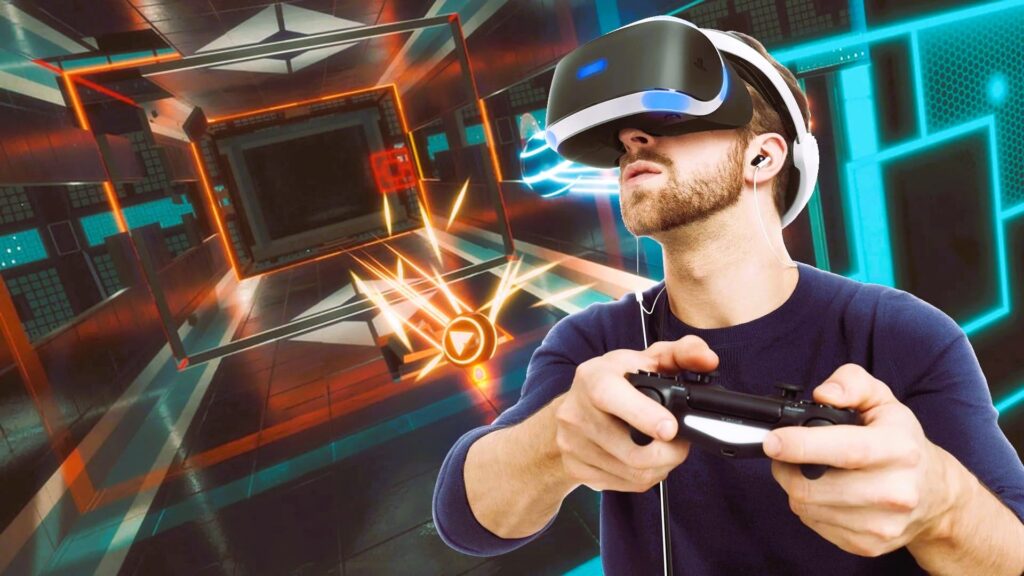Virtual Reality vs. Augmented Reality: What’s the Future of Gaming?

The world of gaming has always been at the forefront of technological innovation. From the earliest pixelated games to today’s hyper-realistic experiences, gaming continues to evolve at an incredible pace. Two of the most exciting advancements in recent years are Virtual Reality (VR) and Augmented Reality (AR). Both technologies have revolutionized how players interact with digital worlds, but they offer distinctly different experiences. The big question remains: which one holds the future of gaming?
In this article, we’ll explore the key differences between VR and AR, their current state in the gaming world, and what the future might hold for both technologies.
Understanding Virtual Reality and Augmented Reality
What is Virtual Reality (VR)?
Virtual Reality is a fully immersive experience where users are transported into a computer-generated 3D environment. By using a VR headset and other sensory devices, players can interact with this environment as if they were physically present in it. VR creates a completely closed-off world that blocks out the real world, providing a deep level of immersion.
Some of the most popular VR systems include Oculus Rift, HTC Vive, and PlayStation VR. These devices use motion tracking and 360-degree visuals to give users the feeling that they are truly inside a game or simulation. VR is often used for first-person games, flight simulators, and virtual tours, among other experiences.
What is Augmented Reality (AR)?
Augmented Reality, on the other hand, overlays digital content onto the real world, blending the physical and virtual environments. Instead of transporting the user to an entirely different place, AR enhances the real world by adding digital elements that interact with the user’s surroundings. This can be experienced through smartphones, tablets, or dedicated AR devices like Microsoft HoloLens or Magic Leap.
One of the most famous examples of AR in gaming is Pokémon GO, which allows players to interact with virtual Pokémon that appear in the real world through their mobile devices. AR games often use the camera, GPS, and other sensors to create this hybrid experience.
Key Differences Between VR and AR

Although both VR and AR are designed to enhance the gaming experience, they achieve this in fundamentally different ways. Here are some of the key differences:
1. Immersion Level
- VR offers full immersion, transporting users into a completely virtual world. Once the headset is on, the real world disappears, and the user is entirely absorbed in the game.
- AR offers partial immersion by blending virtual elements with the real world. Users can still see and interact with their physical environment, but with added layers of digital information.
2. Hardware Requirements
- VR generally requires more specialized hardware, such as a VR headset, motion controllers, and sometimes external sensors or cameras for room-scale tracking. VR also often requires a powerful gaming PC or console to handle the intense graphical demands.
- AR can be experienced with just a smartphone or tablet, making it more accessible. However, high-end AR devices like the HoloLens offer more advanced features but at a much higher cost.
3. User Experience
- VR is more suited for isolated experiences. It’s often best enjoyed in a controlled environment where the user can move around freely without risk of bumping into physical objects.
- AR is more social and integrated with the real world, allowing users to interact with both digital elements and other people or objects in their surroundings. This makes AR games more suitable for mobile and outdoor play. Read our article to learn how to optimize your gaming settings for better performance.
4. Applications Beyond Gaming
- VR is widely used in simulations, training, education, and even therapy due to its ability to create entirely new environments.
- AR has found applications in industries like retail, healthcare, and architecture, where overlaying digital information onto the real world can enhance productivity and provide real-time data.
Current State of VR and AR in Gaming
VR Gaming in 2024
Virtual Reality has come a long way since its inception, but it’s still seen as a niche market within the gaming industry. High-quality VR systems are relatively expensive, and many players find the setup and space requirements limiting. However, VR has seen significant advancements in recent years, with wireless headsets like the Oculus Quest 2 making the technology more accessible.
Some of the most popular VR games include:
- Beat Saber: A rhythm-based game where players slash beats with virtual lightsabers.
- Half-Life: Alyx: A full-length, story-driven VR game set in the iconic Half-Life universe.
- The Walking Dead: Saints & Sinners: A survival horror game that takes full advantage of VR’s immersive capabilities.
Despite its challenges, VR offers a level of immersion that no other platform can match, making it an exciting space for developers and gamers alike.
AR Gaming in 2024
Augmented Reality, while less immersive than VR, has been more widely adopted, particularly in mobile gaming. AR’s success lies in its accessibility—almost anyone with a smartphone can experience AR games without the need for expensive hardware.
Pokémon GO remains one of the most popular AR games of all time, continuously evolving with new updates and events. Other notable AR games include:
- Harry Potter: Wizards Unite: An AR game where players explore their surroundings to find magical artifacts and creatures.
- Minecraft Earth: An AR version of the popular building game that allows players to create and explore Minecraft structures in the real world.
AR gaming continues to grow, with advancements in mobile technology allowing for more complex and visually impressive games.
The Future of Gaming: VR, AR, or Both?

Both VR and AR have unique strengths and challenges, and the future of gaming is likely to involve both technologies in different ways. Let’s take a look at what the future might hold for each.
The Future of VR Gaming
As VR technology continues to improve, we can expect more realistic and immersive experiences. Advances in haptic feedback, eye-tracking, and spatial audio will make virtual worlds feel even more lifelike. Wireless VR headsets and more affordable hardware will help broaden the market, making VR more accessible to the average gamer.
In the future, we could see entire virtual worlds where players can socialize, explore, and compete—an evolution of the Metaverse concept. While VR may not completely replace traditional gaming, it will likely become a significant part of the gaming ecosystem, offering experiences that are impossible to achieve on any other platform.
The Future of AR Gaming
Augmented Reality has the potential to become an even bigger part of everyday life. As AR hardware becomes more advanced and affordable, we can expect to see more immersive and interactive AR experiences. The future of AR gaming will likely be more integrated into the real world, with multiplayer and social elements playing a significant role.
For example, we could see large-scale AR games where players in different cities or countries can collaborate or compete in real-time. As 5G technology becomes more widespread, the potential for AR games that blend the digital and physical worlds will grow exponentially.
Blurring the Lines: Mixed Reality (MR)
A potential future for gaming lies in the combination of both VR and AR technologies, known as Mixed Reality (MR). MR merges the best aspects of both, allowing users to interact with virtual objects in the real world while also immersing themselves in fully digital environments when necessary.
Devices like Microsoft’s HoloLens 2 and Magic Leap are already pushing the boundaries of what’s possible with MR. As these technologies continue to evolve, we may see a future where the lines between the physical and digital worlds are blurred, creating entirely new gaming experiences.
Virtual Reality and Augmented Reality offer two distinct paths for the future of gaming. While VR provides unparalleled immersion, AR brings digital elements into our everyday lives. Both technologies have their strengths, and the future of gaming will likely involve a blend of both. As these technologies continue to evolve, the possibilities for gaming are limitless.
To explore more about AR and VR technologies, visit Wikipedia.



